A safety bicycle is a type of bicycle that became very popular beginning in the late 1880s as an alternative to the penny-farthing or ordinary and is now the most common type of bicycle. Compared with the tricycles of the time, popular with riders less willing to take risks, the safety bicycles were lighter, mechanically more simple, and less expensive.
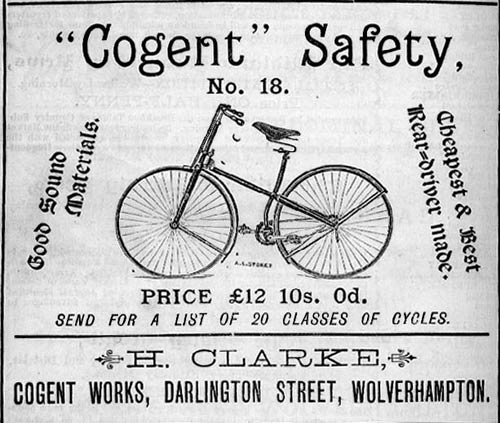
The first bicycle to be called a “safety” was designed by the English engineer Harry John Lawson (also called Henry) in 1876, although other bicycles which fit the description had been developed earlier, such as by Thomas Humber in 1868. Unlike with penny-farthings, the rider’s feet were within reach of the ground, making it easier to stop. The pedals powered the rear wheel, keeping the rider’s feet safely away from the front wheel. The original model used treadles to transfer power to the rear wheel, the updated 1879 model used a chain drive, an important new technology that had previously only been used on tricycles. Lawson’s safety failed to catch on, perhaps due to its increased cost, weight and complexity compared to the penny-farthing.
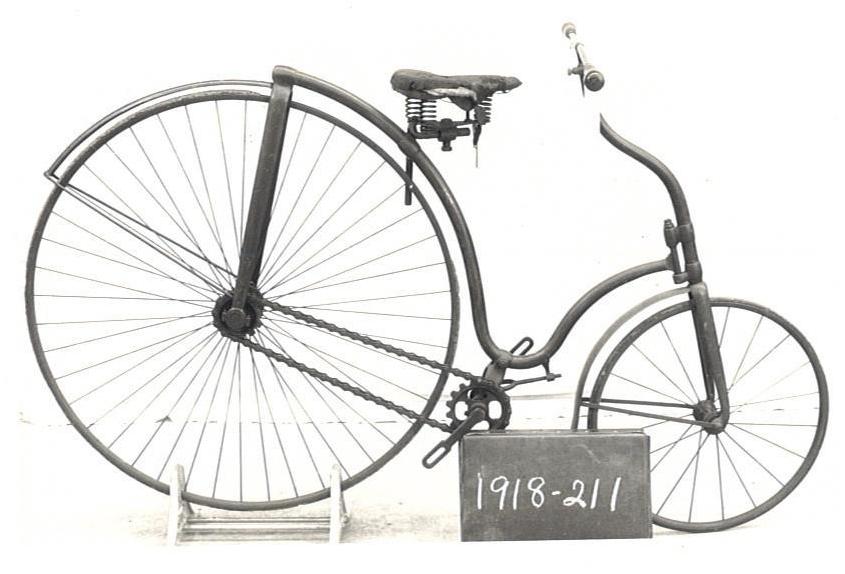
One other variation that appeared at about the same time is the dwarf, exemplified by the Kangaroo, and with a chain-driven front wheel.
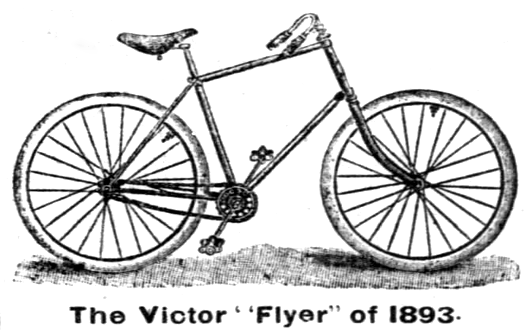
The Overman Wheel Company, founded 1882, was the first manufacturer of safety bicycles in the United States, in their factory complex in Chicopee, Massachusetts. Overman was known for making all-steel bicycles with no cast metal parts. The Overman Victor Bicycle was said to be of higher quality and lower weight than other bicycles of its time. By 1893, the Overman factory made the complete bicycle, including tires, saddles, rims, etc.
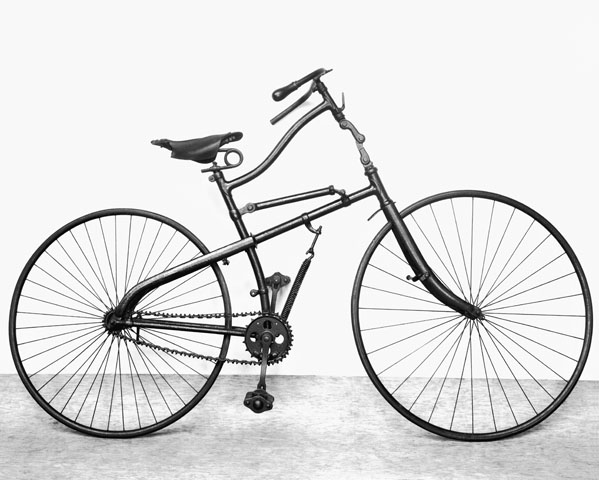
By 1885, the safety bicycles cataloged in Henry Sturmey’s Indispensable Handbook to the Safety Bicycle included seven with lever front-drives, 44 with geared front-drives, and only nine with chain rear-drives. In that same year, John Kemp Starley came out with the first commercially successful safety bicycle he named the Rover. It was heavier and more expensive than penny-farthings, but lighter and cheaper than tricycles of the day. It featured a steerable front wheel that had significant caster, equally sized wheels and a chain drive to the rear wheel.
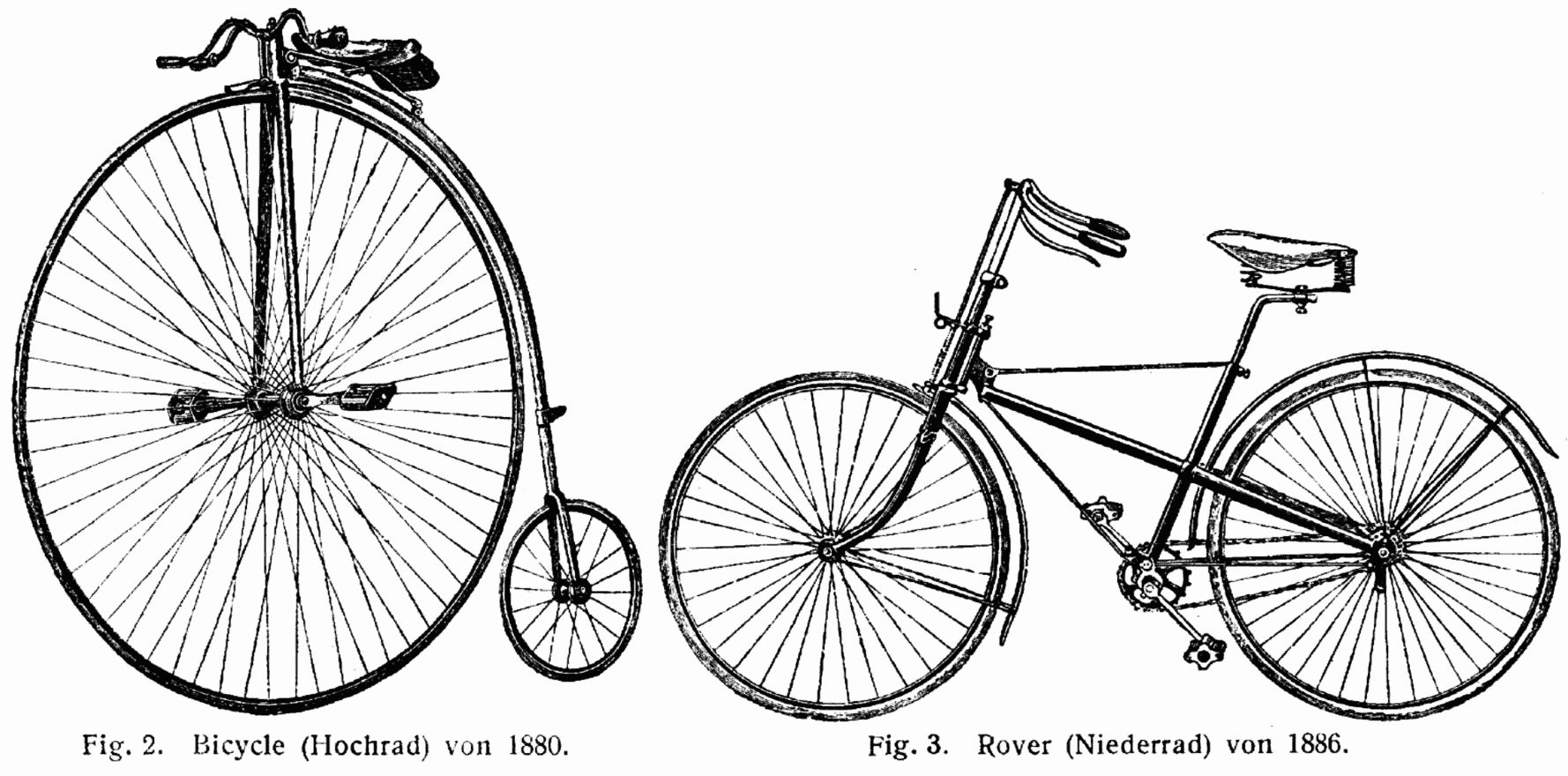
Meanwhile, John Dunlop’s reinvention of the pneumatic bicycle tire in 1888 had made for a much smoother ride on paved streets; the previous type were quite smooth-riding, when used on the dirt roads common at the time.
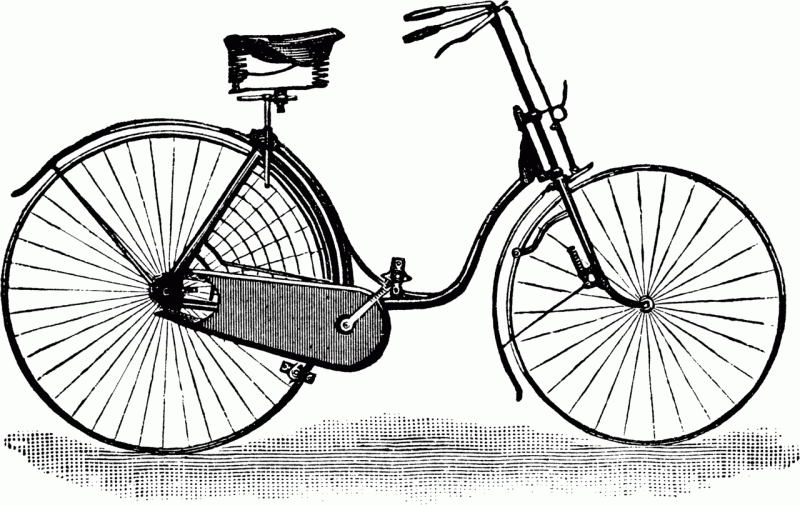
As with the original velocipede, safety bicycles had been much less comfortable than high-wheelers precisely because of the smaller wheel size, and frames were often buttressed with complicated bicycle suspension spring assemblies. The pneumatic tire made all of these obsolete, and frame designers found a diamond pattern to be the strongest and most efficient design.
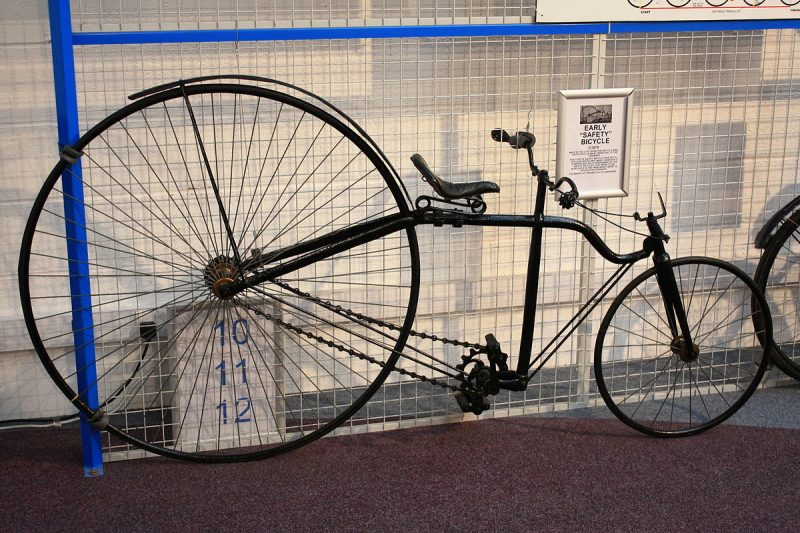
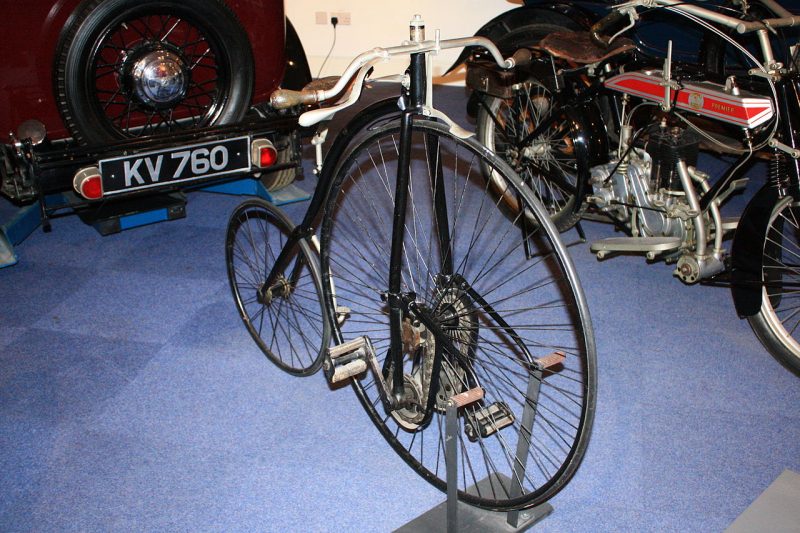
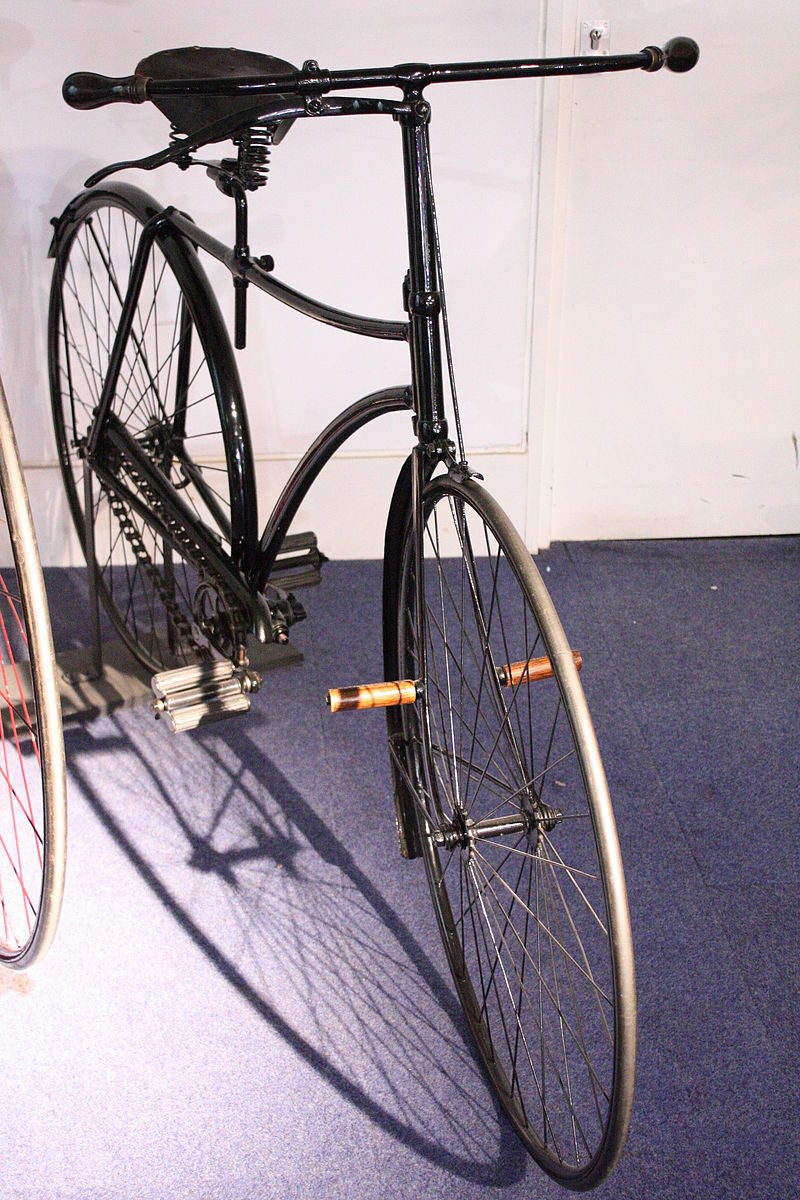
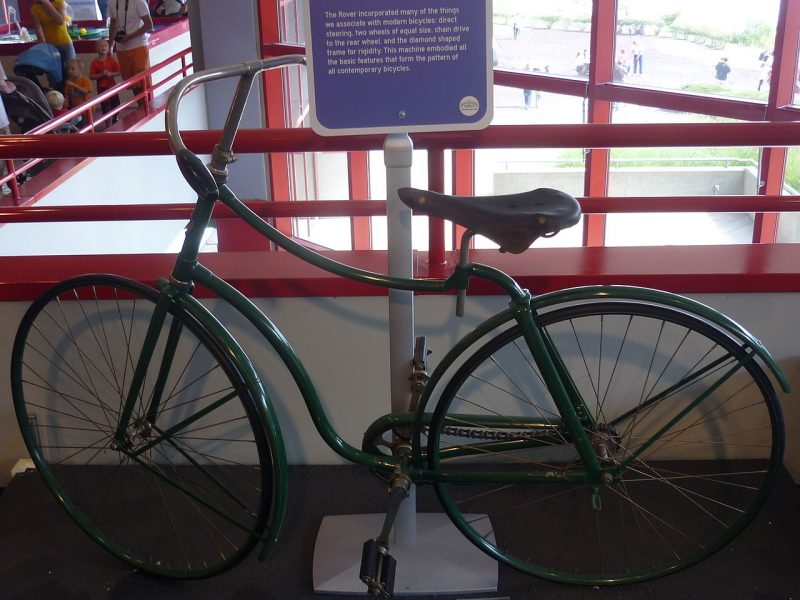
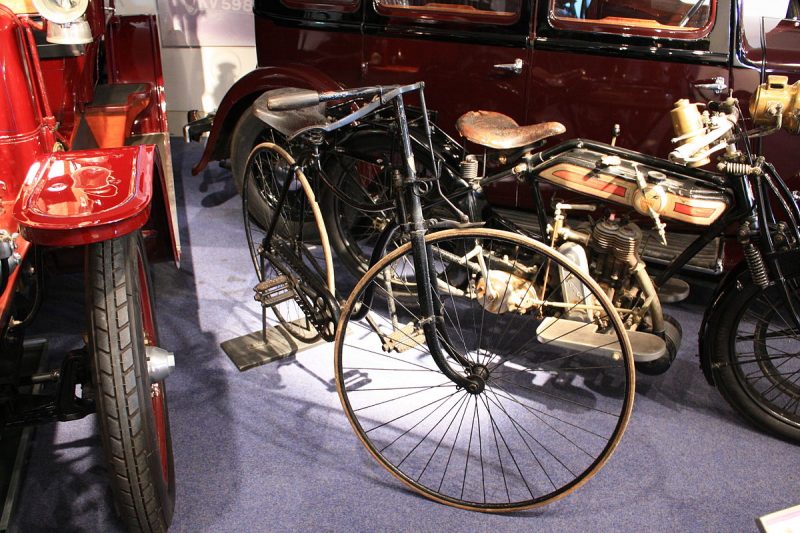
The pneumatic tire and the diamond frame improved rider comfort but do not form a crucial design or safety feature. A hard rubber tire on a bicycle is just as rideable but is bone jarring. The frame design allows for a lighter weight, and more simple construction and maintenance, hence lower price.